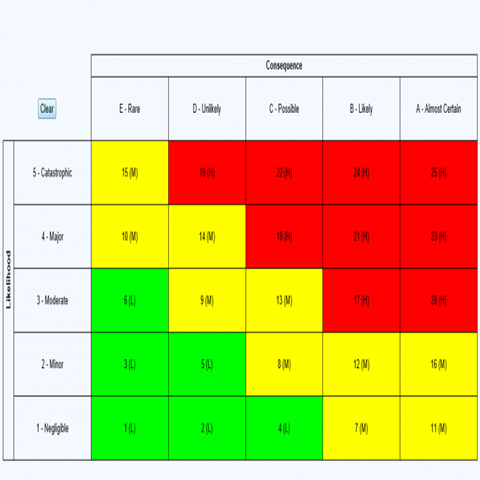
CASE STUDY

Risk Management on Pipeline Construction Project
Summary
Background
Challenge
Managing Risk with Too Many Spreadsheets
The sheer scale of the project, combined with its geographical spread, necessitated a central risk management system accessible to all relevant personnel, irrespective of their location. Initially, the project team relied on spreadsheets to manage risks. However, this method quickly proved inadequate due to several issues:
- Fragmentation of Information:
Multiple copies of spreadsheets were created, leading to discrepancies and outdated information. This fragmentation made it difficult for management and personnel to ensure they were working with the latest data, complicating decision-making and coordination.
- Accessibility Issues:
Spreadsheets were not easily accessible from all project locations, hampering effective collaboration among international stakeholders.
- Workflow Challenges:
Implementing and tracking workflows using spreadsheets was cumbersome, leading to inefficiencies and potential oversight in managing risks.
- Internal Management System Incompatibility:
Many stakeholder companies had their own risk management systems, inaccessible to external collaborators. This created silos and additional hurdles for ensuring safe and coordinated project operations.
Solution
Recognizing the limitations of their current approach, the company turned to Pisys, leveraging their Action Tracking System (ATMS) for a more unified risk management solution. Here’s how the implementation of Pisys ATMS addressed their challenges:
- Unified System Across All Stakeholders
Pisys ATMS was introduced across all project locations and stakeholder companies, providing a common platform for risk management. This ensured that everyone involved had access to the same system, facilitating better coordination and collaboration.
- Risk Matrix Customization
The Pisys team configured the ATMS to include a ‘risk matrix’ functionality, allowing users to set up custom matrices tailored to their specific needs. Since many engineers were already familiar with risk matrices, this feature minimized the need for extensive retraining, saving both time and costs.
- Migration and Training Support
To ensure a smooth transition, Pisys assisted with migrating existing risk-related actions from spreadsheets into the Action Tracking System. They also provided training, enabling project personnel to quickly become proficient in using the new system independently.
- Centralized, Cloud-Based System
The cloud-based nature of Pisys ATMS ensured that all information was centrally stored and accessible from anywhere. This centralization eliminated the issues of fragmented and inaccessible data, ensuring that the latest information was always available to all stakeholders.
- Enhanced Workflow and Auditability
Pisys ATMS allowed for the creation and tracking of actions to mitigate risks across the entire project lifecycle. The system structured actions, projects, and sub-projects, managing workflows efficiently from initiation to closure. It also automatically recorded all changes to actions, ensuring transparency and keeping all involved parties informed.
Results
The implementation of Pisys ATMS led to several significant improvements in the project’s risk management processes:
- Streamlined Change Management:
A structured change management process was established, ensuring multi-stage approvals and clear documentation at each step.
- Centralized Risk Management:
All project stages and actions were saved electronically in a central location, accessible from anywhere, ensuring that all stakeholders had up-to-date information.
- Improved Collaboration and Communication:
The unified system facilitated better collaboration across international teams and stakeholder companies, breaking down silos and ensuring consistent communication.
- Increased Efficiency and Reduced Errors:
The structured workflow and automated processes reduced administrative overhead, ensuring that risk-related actions were managed efficiently and accurately.
- Better Governance and Accountability:
Enhanced tracking and auditability provided complete transparency, ensuring that all actions and decisions were documented and accountable.
Conclusion
By implementing Pisys ATMS, the customer successfully addressed the complex challenges of managing risk for a major international pipeline project. The transition from fragmented spreadsheets to a unified, cloud-based system enabled better coordination, improved communication, and more effective risk management across all project phases and stakeholders. This case study underscores the importance of a robust risk management tool in ensuring the success of large-scale engineering projects, providing a model for other organizations facing similar challenges.
CONFIGURABLE
Risk Matrices
CENTRAL
Management
AUDITABLE
Workflows
Testimonial
ATMS has allowed us to establish a single source of truth for our risk management process
ATMS is a web-based action tracker
Typically used to manage and report on high-governance actions such as HAZOPS and Audits, the Pisys ATMS is highly configurable and comes with full KPI dashboard, Power BI interface and a built-in audit trail.
